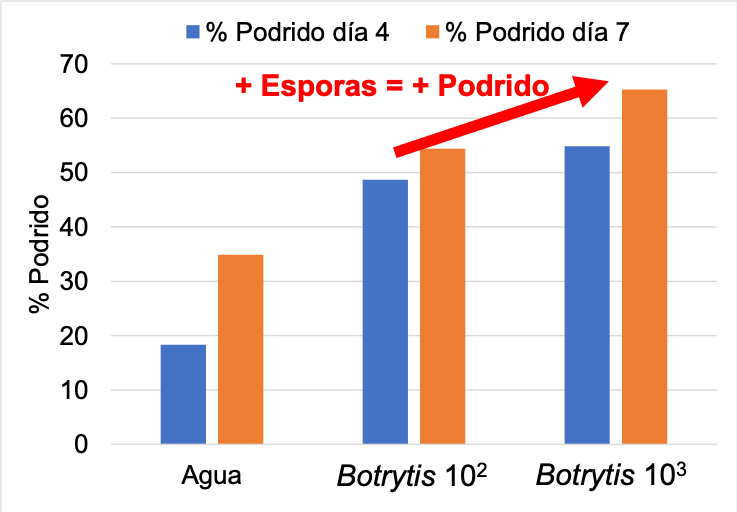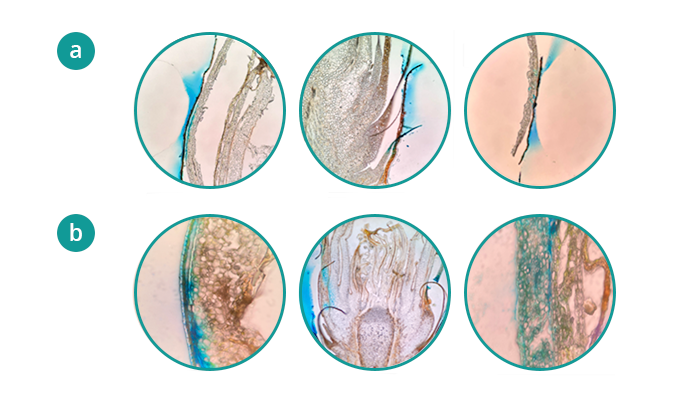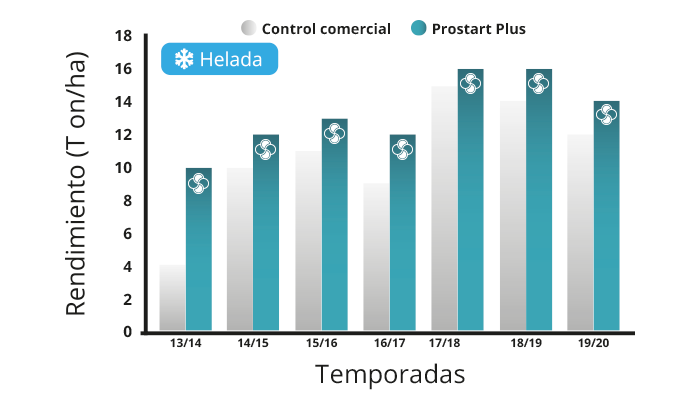The autumn-winter months begin and, as every year, we evaluate the results of the previous season and plan the upcoming season, a process in which we ask ourselves questions: how is the cold accumulation coming? When will the Chinese New Year be? What homogenization strategy will be optimal? Do I apply only hydrogen cyanamide or do I use it in tandem with another product? These and many other questions need to be answered to define an optimal start to the season.
Before discussing the advantages and benefits of Prostart Plus, it is important to remember the basics and importance of the winter rest in cherry and other deciduous fruit trees. And also the basis for subsequent applications. First of all, the dormancy phase is a phenological phase that plays a physiological role in plants, so it is not an isolated event, and both the preceding and subsequent phases will define the plant's behavior and its productivity.
In this sense, the 23-24 season is an example of what can happen when there are post-harvest and recession periods and the beginning of budding with many limitations (insufficient cold, floods, late rains, and poor-quality degree-day accumulation; Figure 1). Therefore, post-harvest and the correct choice of our exit strategy will determine the productivity and qualitative potential.
 Figure 1. Cross-section of shoots treated with hydrogenated cyanamide and "caustic" homogenizer in tandem with calcium nitrate. A: Longitudinal section front view; B: Longitudinal section rear view; C: Longitudinal section and penetration zone.
Figure 1. Cross-section of shoots treated with hydrogenated cyanamide and "caustic" homogenizer in tandem with calcium nitrate. A: Longitudinal section front view; B: Longitudinal section rear view; C: Longitudinal section and penetration zone.
In seasons where the Chinese New Year is "early", we tend to rush to choose aggressive, ineffective, and highly stressful strategies for our plants. Is it a bad idea to use cyanamide and tandem with caustic dormancy breakers? It is an unfriendly strategy, however, it is highly recommended in years with low cold accumulation and in variety/rootstock combinations that give precocity and are found in early areas.
However, even though the use of cyanamide and friendlier homogenizers in years with low and inadequate cold accumulation may not show differences or reach (harvest date) 2 to 4 days compared to their more aggressive competitors (very specific for early areas and short-cycle varieties), the size and other parameters of quality and productivity are lower.
While in years of adequate or excellent cold accumulation, the harvest date is exactly the same between the two strategies (aggressive products versus friendly products), but the productivity, quality, and size parameters are always superior.
What happens when applied in the early stages?
There is no doubt that the use of cyanamide in combination with homogenizing products in tandem is important in current agronomic management. However, if we consider the application in tandem of a "caustic" homogenizer and calcium nitrate 7 days after cyanamide, we notice a "low" penetration of the products (Figure 1).
However, when the "friendly" products are applied at a later time (green tip), the penetration and movement within the bud are much deeper and more direct into the tissue. This allows us to infer that early applications can be inconsistent, depending on the effectiveness of the application and the ability to damage the bracts and expose the tissue to the environment (forcing activation).
In contrast, later applications and the use of formulations that penetrate and stimulate the tissue are more effective and can generate greater benefits in terms of productivity and quality. However, not all available products have the ability to be applied at that time.
 Figure 2. Histological section of buds at the green tip stage with aqueous solution and dye (A) and "friendly" homogenizer with dye (B).
Figure 2. Histological section of buds at the green tip stage with aqueous solution and dye (A) and "friendly" homogenizer with dye (B).
What do we mean by a more friendly homogenizer?
Prostart Plus is the first homogenizer-synchronizer biostimulant on the market and is also the most "friendly", whose formulation has a nutritional component (amino nitrogen, calcium, magnesium, zinc, and boron) and compounds that promote the natural activity of growth-promoting phytohormones, generating an adequate hormonal ratio in the buds, relieving the stress generated by hydrogen cyanamide and stimulating a more homogeneous and synchronous budding of vegetative and floral buds.
Advantages and benefits:
- It is the first product of its segment on the national market.
- Hundreds of trials in various variety-rootstock combinations, agro-climatic zones, and seasons (over 20 years).
- Can be used as a tandem to homogenize, synchronize, and anticipate fruit precocity, if applied 7 days after cyanamide, in combination with calcium nitrate or another accompanying salt.
- It is the only product in the segment with greater consistency in size and quality (Table 1 and Table 2).
 Figure 3. Results of 7 seasons of Prostart Plus on cherry cv. Royal Dawn. Location Rosario, O'Higgins Region, Chile.
Figure 3. Results of 7 seasons of Prostart Plus on cherry cv. Royal Dawn. Location Rosario, O'Higgins Region, Chile.
| Table 1. Size distribution of cherries cv. Santina in Rancagua, season 2022-2023. |
|---|
| Treatment | L (22-24mm) | XL (24-26mm) | J (26-28mm) | SJ (28-30mm) | P (30-32mm) |
| Commercial Control | 0.8 | 1.4 | 9.2 | 32.2 | 35.8 b |
Prostart Plus
| 2.4 | 4.0 | 4.0 | 14.4 | 52.6 a |
P Value
| 0.540 | 0.622 | 0.595 | 0.151 | 0.039 |
| Table 2. Leaf area per spur in cherries cv. Santina in Sagrada Familia location, season 2021-2022. |
|---|
| Treatment | Leaf area / Spur (cm2) |
| Commercial Control | 50 b |
| Prostart Plus | 54 a |
Finally, we must remember that even if the recession and cold accumulation entry were optimal, the development at the beginning of spring will be determined by the accumulation of degree-days and will therefore be an ally or an obstacle to the optimal functioning of homogenizing products.
Source: Portal Frutícola
Images: Portal Frutícola
Cherry Times - All rights reserved













